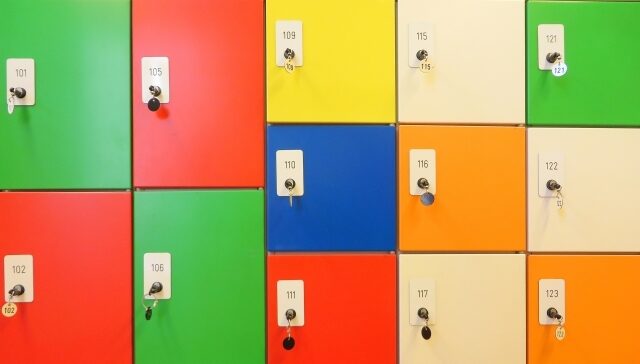I thought of this song again recently and it’s very funny. In the 00s, there were so many visual kei bands that basically anything went. Of course, there’s still a lot of genre variation, but it was really pushed to the limit during the indie boom. We had plenty of parody/comedy bands (Golden Bomber being the success story) and Kenzi and others were trying to make punk really happen with projects like ANTI-FEMINISM or KLACK (and we will talk about KLACK someday, believe me…).
Dokusatsu Terrorist was sort of at the intersection of the two. They were a parody of punk, a parody of visual kei, extremely self-referential, and stupid (affectionate). I didn’t really get them when I was a teenager, because they really require language knowledge to appreciate. I still listened to comedic, punky, weird vkei because I would listen to anything that could be downloaded, but I lacked context for sure.
They had a lot of songs with titles that you couldn’t possibly anticipate – “Terror! An Earthquake While I Was Jacking Off!”, “Buy a Wig Baldy”, “I Was a Morning Musume Wota Pervert”. Some were probably a little offensive, like “Hallyu Hell”. But they were specifically designed to make you say “damn” so it’s hard to take all that seriously. This particular song is just pure fun foolishness for the girls, though.
Dokusatsu Terrorist – musume wa bangya (My Daughter is a Bangya)
my daughter’s possessed by a demon!
my daughter is shaking her head!
my daughter is screaming in a hoarse voice!
my daughter’s eyebrows are missing!
i called an exorcist but
crosses, garlic, holy water – none of them worked!
it seems it’s not the work of the devil
but a disease by the name “bangya”
my daughter was possessed by a spirit!
my daughter is screaming that her neck hurts…
there’s weird noise coming from my daughter’s room!
my daughter’s makeup makes her look like a monster…
i called a shaman but
the amulets and prayers didn’t work at all!
it seems it’s not the work of a ghost
but a disease by the name “bangya”
My daughter – I never meant to raise you
to end up like this, but…
My daughter – I meant to raise you
as a normal girl – Why?!
my daughter joined a strange religion?!
my daughter dances strange choreography!
my daughter calls everyone around her “panpi”
my daughter just went and changed her name!
seiban, setori, saizen koushou…
i don’t understand what she’s saying…
but it doesn’t seem to be a sutra reading
it’s a disease by the name “bangya”
the spending money i earned for you with my blood, sweat and tears
is being used for the CDs of these freaks…
the spending money i earned for you with my blood, sweat and tears
is being used for the cheki of these freaks…
A lot of what’s described here will make sense if you’ve seen just one recorded live vkei show, but there’s some stuff that needs explaining.
1. Panpi (パンピ): This word was originally used by people in the industry to denote non-celebrities (from ippan(jin)/regular person). Vkei fans use it more like the word “normie”. They do use it for just anyone who doesn’t know/get visual kei (like “oh my panpi friend borrowed my armwarmers”), but they also like to use it on each other to assert superiority. If some new fan pisses you off you can say “go home panpi” and let her know she will never be that girl.
2. Seiban (整番): The shortened form of “seiri bangou”/整理番号. In Japan, most live shows are ticketed with a specific entry order. As a result, all tickets are numbered – that number is called a seiri bangou or seiban.
3. Setori (セトリ): This is just the shortened version of the word setlist.
4. Saizen Koushou (最前交渉): Front-row negotiations. The practice of deciding who is going to stand where in the front row during which band, allowing for easy switches between sets. You might have a good seiban but that doesn’t mean you’re going to get front row if you’re a fan of the bassist and everyone with a better number wants a spot in front of him – you might be asked to compromise or be denied a spot in front row altogether (second row is superior, anyway). If it’s a multi-band event, you may only want stay in front row for the band(s) you came to see and will agree to switch with another group’s fan when your band is done. This practice is irrelevant for solo shows by large bands, and officially banned by most small-medium bands, but depending on the size of the group or event, it may still be employed anyway. It’s one of those parts of bangya culture that can be quite nice and allow for smooth experiences when used by well-meaning fans, but can also result in a lot of stress and in-fighting if poorly managed.
Historically, saizen koushou is much more complex than I described here and there are probably still groups who use the older, more rigorous systems, but now you really don’t know what you’ll get until you get there.
Anyway, this song makes me feel bad for spending my lunch money on used visual kei CDs, but also grateful that I had parents who really believed in freedom in art and self-expression. Thank you for supporting your teenage daughter’s incomprehensible hyperfixation, Mom and Dad.
